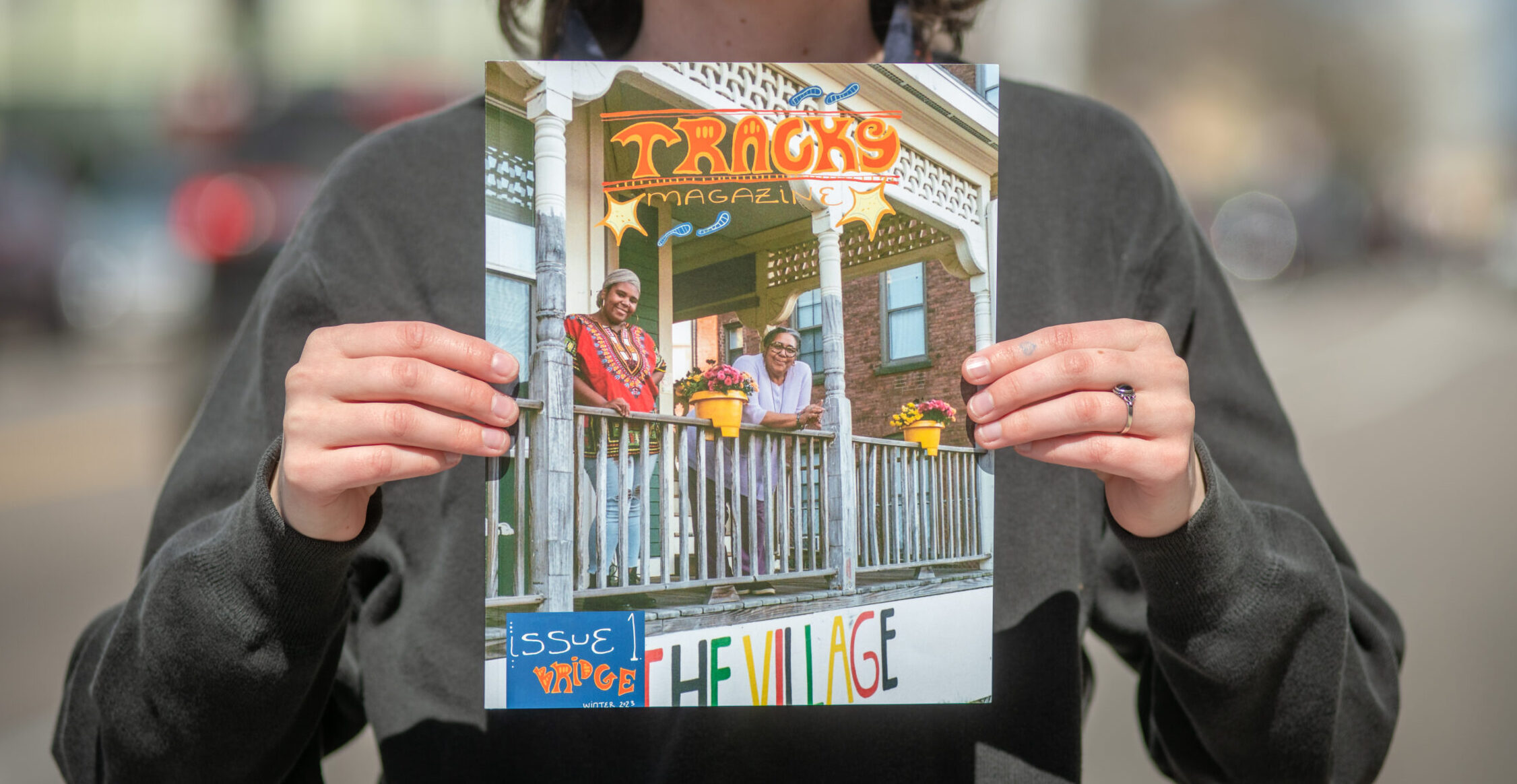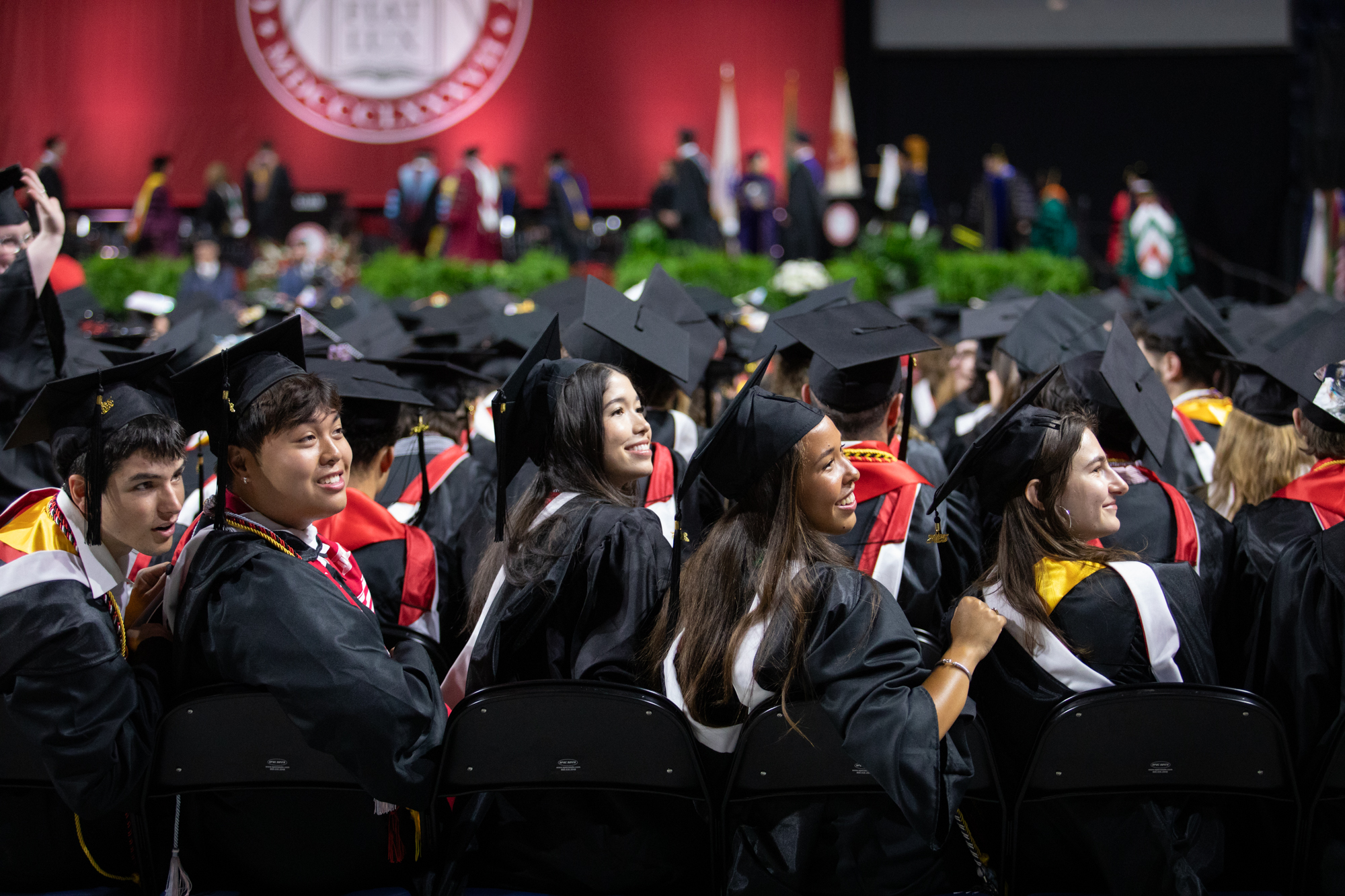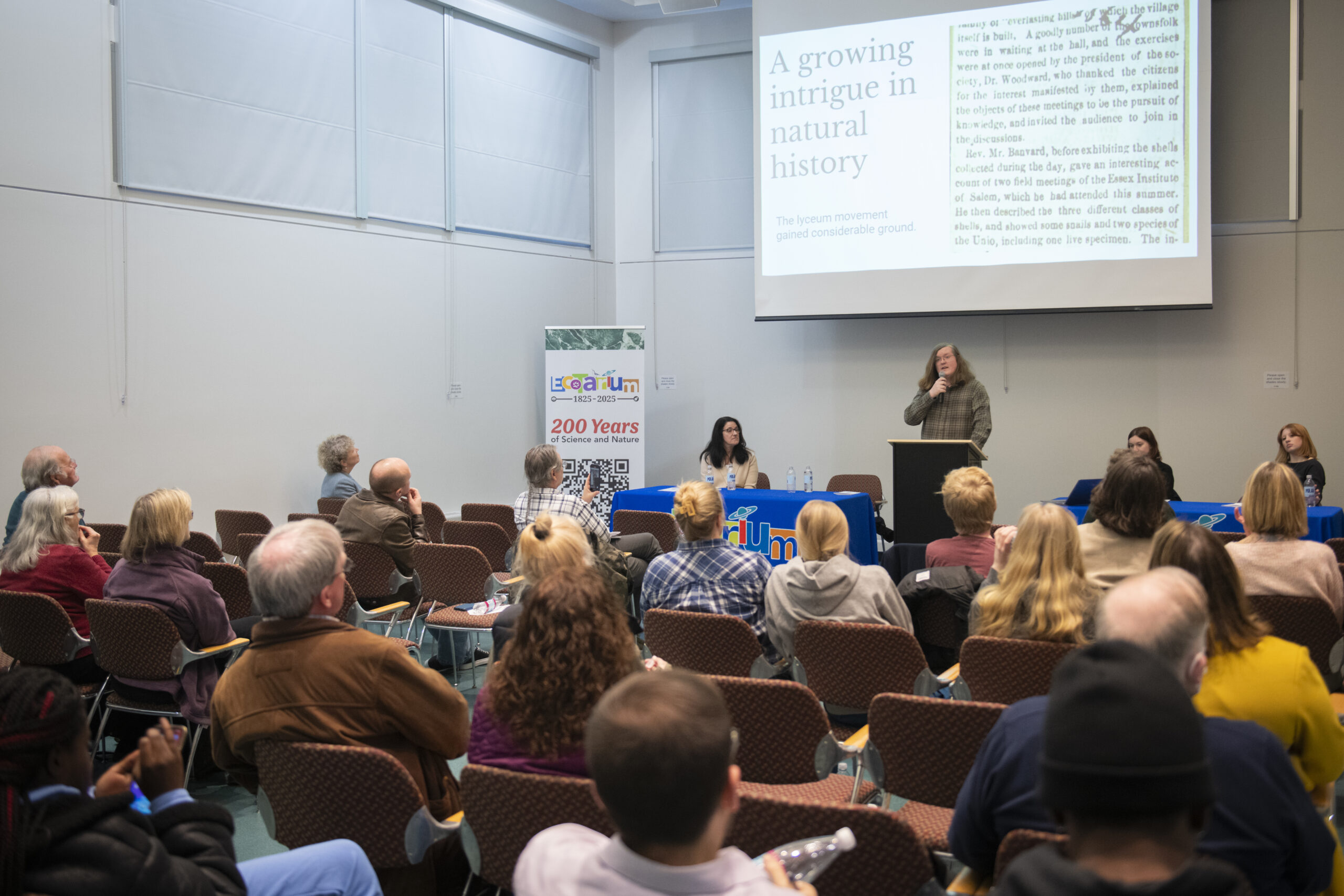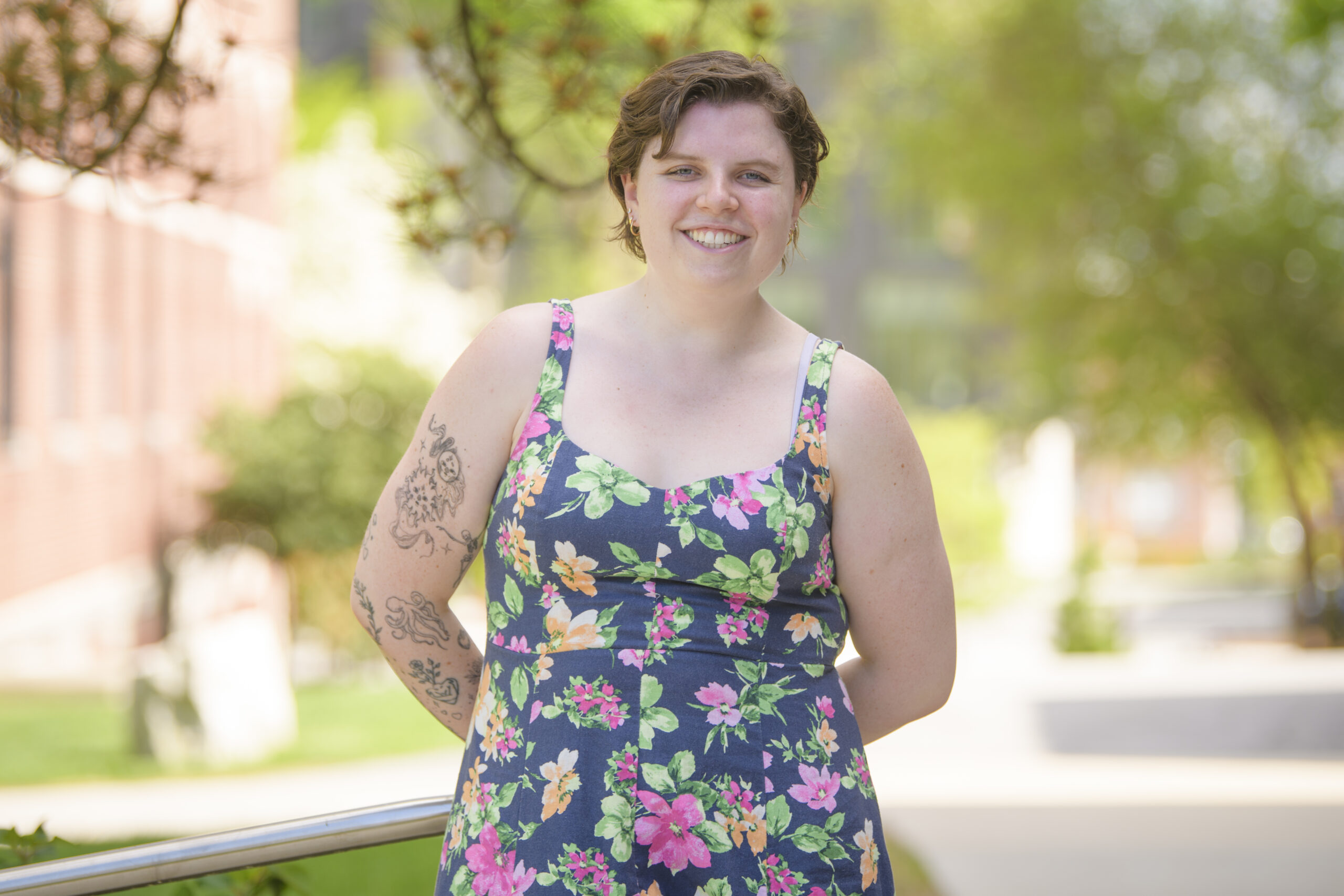Sophie Gill ’23 launches community arts and literary magazine
Sophie Gill ’23 with TRACKS Magazine in Worcester’s Main South.
Unconventional creative projects have always sparked the imagination of Sophie Gill ’23, and art is how she wants to make the world a better place.
Gill is pursuing this very mission in Worcester’s Main South neighborhood, where she created and distributed a magazine that highlights the talents of the community and her fellow Clarkies.
“Art is the main way I make sense of what I learn and put it back into the world,” says Gill, a double major in media, culture, and the arts (MCA) and community, youth, and education studies (CYES).
For her CYES praxis project, she found a way to sync her interdisciplinary interests through a medium that has long intrigued her: magazines.
“There’s practically no research on magazines as a tool for enacting social change or building identity and community, especially not communally constructed magazines,” Gill says.
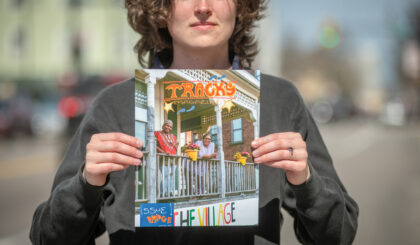
Excited by the prospects, Gill organized the publication and distribution of a community-driven arts and literary magazine called TRACKS. She saw the project as an opportunity to invite relationships between Clark and the greater Main South community while complementing existing collaborations like the University Park Partnership, which promotes home ownership and economic and educational opportunities in the neighborhood
“Anyone can be an artist, and there are many types of art to be made,” Gill says. “Art is a space for reflection. One person’s artistic vulnerability can be impactful for others, helping them figure out things about themselves, understand the world, and make sense of their identity within a larger community.”
Six Clark students volunteered as the core administration and creative team behind TRACKS.
Together, they designed and posted flyers around Main South and used Instagram to spread the word about the project. Within days, more than a dozen artists from Main South submitted works of photography, poetry, prints, paintings, and prose. The fusion of several art forms in one project fills Gill with a sense of wonder.
“They all come together in this little print world of TRACKS,” she marvels.
The core team met weekly to design the magazine. Early in the process, they pitched ideas for the publication’s name and theme.
“Every single part of the process was done collectively. I remember trying to come up with a name, and I thought I had a great one picked out — Crash — and it was shot down,” Gill says with a laugh. “But that’s part of why we worked as a team. We decided that name sounded a bit aggressive.”
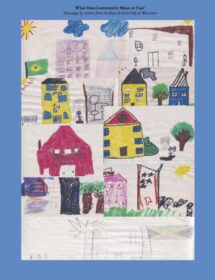
Once the team landed on TRACKS as the title, they arranged the magazine page-by-page, writing feature stories about the people behind community organizations like The Village and Worcester Regional Environmental Council. One page includes a constellation of illustrations from children at the Boys & Girls Club.
Gill appreciates the easy accessibility of art in a print publication as opposed to searching for it on an Instagram account or a website.
“There is something so satisfying about holding your hard work in your hand versus seeing it online,” she says. “Contributing artists could see their art reproduced in a tangible medium.”
Gill printed and distributed 100 copies of the magazine around the neighborhood in spaces like the Community Fridge, The Village, the Clark Thrift Store, Claremont Academy, and left copies at various locations in University Park.
“I see the magazine as a small art exhibit or museum, but travel-sized and on the move,” Gill says.
Gill’s honors thesis focuses on the impact of the project. Post-distribution, she discovered that TRACKS helped local artists reach a new audience at Clark and prompted more community connections through projects like The Lounge.
After graduation, Gill — who is also an executive member of Radio of Clark University and the Peapod Squad, Clark’s oldest improv team — hopes to continue her artistic endeavors and maybe even start another magazine.
“I don’t have any one particular dream job, but I do want to keep working in creative spaces,” says Gill, who currently works at ArtsWorcester, a free and open gallery space that features community artists. “Anything with creative work is exciting to me.”
As for TRACKS, Gill hopes a new team of students will take over the project so it can live on.
“I want it to be something that can continue and flourish,” she says.


